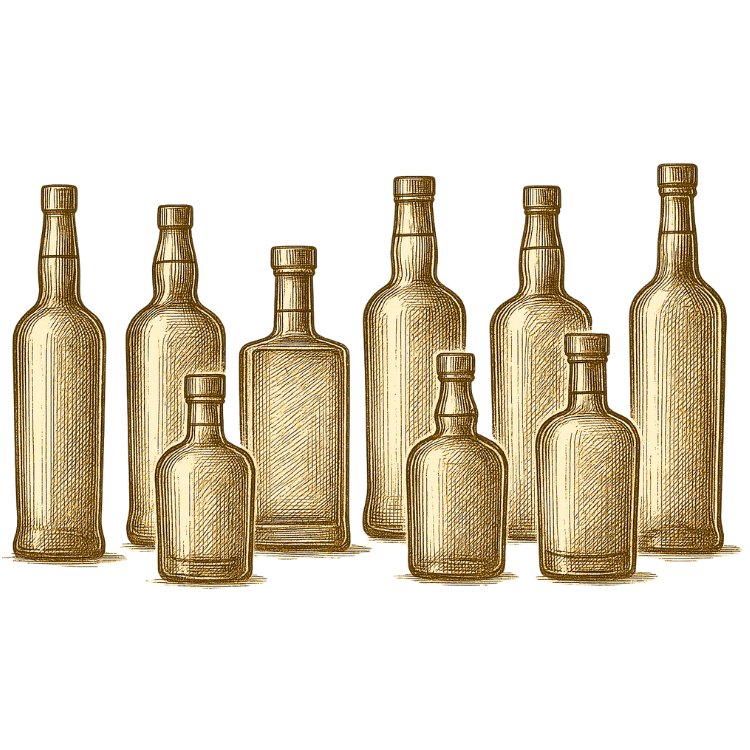In Defence of the Blend
a primer on blended Scotch whisky
Blended Scotch has a PR problem. It’s often cast as the “lesser” sibling to single malt—dependable, sure, but hardly the star of the show. That’s a myth worth retiring. At its best, blended varieties are one of whisky’s greatest feats: dozens (sometimes more) of distinct whiskies brought into harmony so that the final dram sings the same tune, bottle after bottle.
So what is blended Scotch?
In short: it’s a marriage of single malt whiskies (pot-distilled from malted barley) with single grain whiskies (usually column-distilled from grains such as wheat, maize, or unmalted barley). Malt brings character and colour; grain brings texture, sweetness, and glide. Put them together and you get flavours a single distillery could never achieve alone.
In essence, blended Scotch whisky is an intricate art as much as a precise science. Blenders are meticulous, talented, and masterful.
As unapologetic blend defenders, we’re here to show you the craft behind the label: how blenders build flavour, why grain whisky is not “filler,” and what to look for in the glass.
Meet the Scotch family (the process and its types)
The basics: Scotch whisky is distilled from mashed malted barley, and it may include other cereals such as rye, wheat, or corn. Malting requires barley to be soaked in water and allowed to germinate before drying in a kiln. Then, the malted barley (alone or with other cereals) is ground into a flour called grist.
Next comes the mashing process, where the grist is mixed with hot water to extract sugars. The wort created from this mashing process is fermented with yeast, resulting in a beer-like liquid called wash.
Wash is placed into a still where alcohol gets separated out, producing a high-proof spirit, which is then aged in oak casks for a minimum of three years to create whisky. The distinct flavours of the final product come from the ingredients of the mash as well as the notes pulled from the casks, which often had former lives holding other varieties of spirits.
To be considered a Scotch whisky, the whisky has to be distilled and aged in Scotland.
Across Scotland, every distillery is a little universe of its own, tweaking everything from fermentation times to the quirky curves and heights of their copper pot stills.
These details may seem small, but together they shape the whisky’s personality, giving each dram its unmistakable fingerprint.
But those are just the basics. Here are the types:
Single malt Scotch whisky
A single malt is a whisky that has been produced from malted barley at one, single distillery.
The ‘single’ in single malt doesn’t mean that the whisky has come from a single batch, barrel, or cask of whisky, though. It simply means that it comes from one distillery.
Single grain Scotch whisky
Like a single malt whisky, a single grain whisky is produced from a single distillery. But grain whisky doesn’t need to be from malted barley—other cereal grains such as corn, rye, and wheat are distilled to make grain whisky.
Grain whisky is normally distilled differently from a single malt whisky. While single malts are always distilled in traditional pot stills, single grains can be distilled in column stills, which often create a higher level of alcohol in the final product.
So…you can use just malted barley, but if you through it in a column still, you’ve got single grain whisky, not single malt whisky.
Blended Scotch whisky
Blended Scotch whisky is produced by mixing different single malt and single grain whiskies from various distilleries.
The blending process was created because older expressions of single malt whiskies tended to have raw, strong flavours that were harder to drink. When blended with single grain whiskies, however, the flavour became milder and more palatable to a wider market of drinkers. It also allowed for more consistent products to be produced.
Blending is where whisky turns into alchemy. By mixing single malt Scotch with single grain Scotch in endless combinations, distillers craft a kaleidoscope of flavours, and each new mix is a different adventure for the palate.
This is an art as much as it’s a science. Master blenders act like conductors, selecting and balancing whiskies so their individual notes don’t clash, but harmonise into something greater than the sum of its parts.
With nearly 150 single malt and single grain distilleries scattered from the windswept Islands to the rolling Highlands, the Lowlands, and Speyside, Scotland provides an almost infinite pantry of flavours for this rich and layered art.
How Scotch whisky is blended
The blending process begins with selecting various single malt whiskies, each coming from a single cask. These are then combined with single grain whisky.
Grain whisky serves as a backdrop, allowing the complex flavours of the malt whiskies to shine. This process is similar to painting: grain whisky provides the canvas, and the malt whiskies are the vibrant colours.
The challenge for blenders is to merge these whiskies so that the distinctive qualities of each malt are neither lost nor overpowering, while the grain whisky enhances the overall blend.
The big question
Is single malt Scotch whisky better than blended Scotch whisky?
The simple answer: No way, man.
Blended Scotch whisky is anything but simple. Behind every bottle lies a careful dance of single malts and grains, chosen and combined to create drams with layers of flavour you’d never find in a single malt alone.
This is the blender’s playground, where creativity, science, and tradition collide to craft whiskies that are complex, surprising, and downright delicious.
Blending demands an intimate knowledge of each whisky’s quirks and strengths, and the instinct to balance them so no note overpowers the others.
Done well, the result is harmony in a glass: a distinctive expression that tells its own whisky story.
P.S. an interview with a Master Blender is coming, tout suite.





